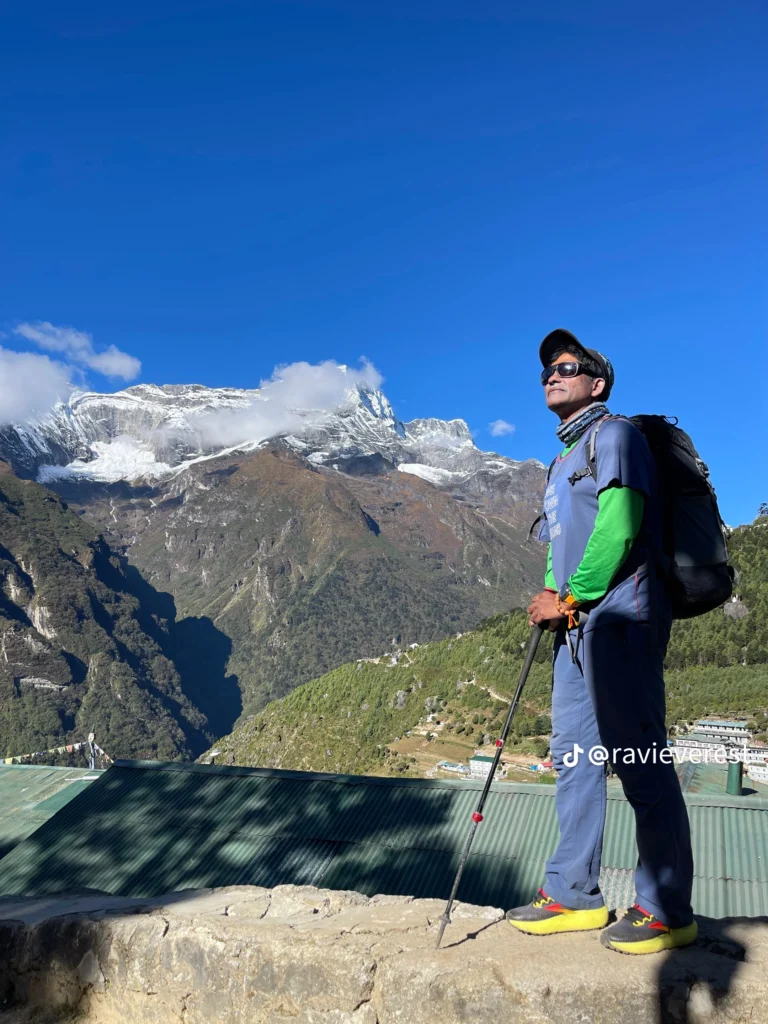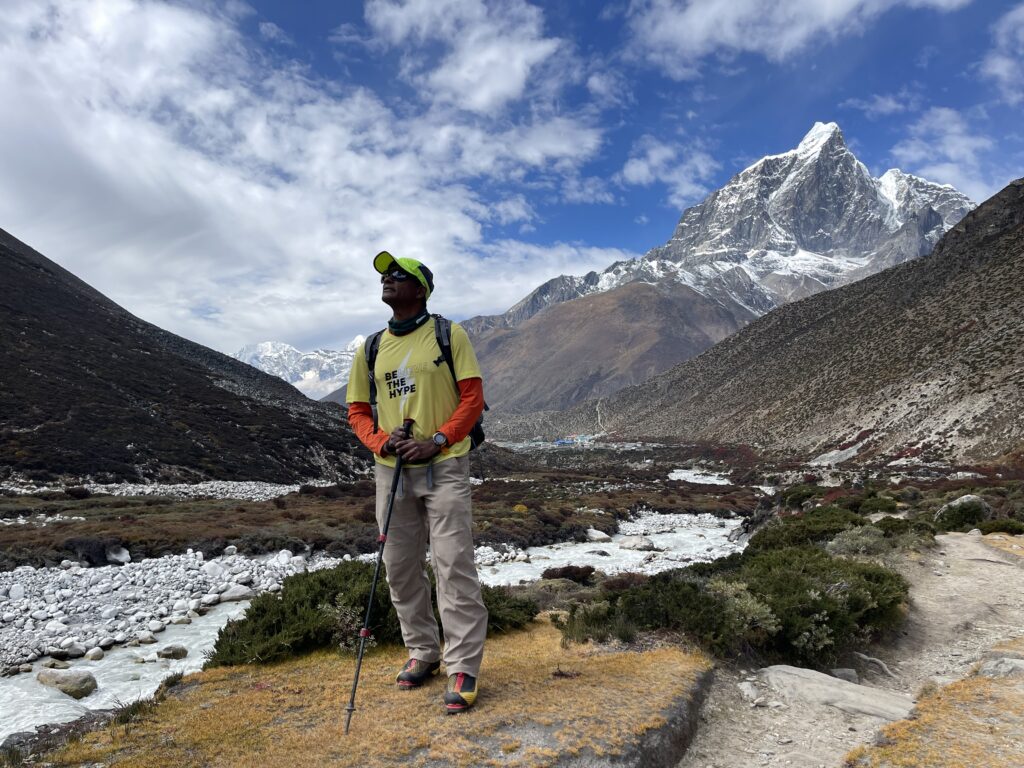The Everest Base Camp (EBC) trek is one of the most popular and iconic trekking routes in the world, offering breathtaking views of the Himalayas and a chance to experience the culture of the Sherpa people. Here’s an overview to help you plan your trek:

Key Highlights of the Everest Base Camp Trek
- Location: Sagarmatha National Park, Nepal.
- Duration: Typically 12-14 days round trip (depending on the itinerary).
- Difficulty: Moderate to challenging (requires good physical fitness and acclimatization).
- Altitude: Reaches 5,364 meters (17,598 feet) at Everest Base Camp.
- Best Time to Trek:
- Pre-monsoon (March to May): Stable weather, clear skies, and blooming rhododendrons.
- Post-monsoon (September to November): Cool temperatures and excellent visibility.
- Winter (December to February) is also possible but very cold.
Typical Itinerary
The trek usually starts and ends in Lukla, with a flight from Kathmandu. Here’s a sample 12-day itinerary:
- Day 1: Fly to Lukla (2,860m), trek to Phakding (2,610m).
- Day 2: Trek to Namche Bazaar (3,440m).
- Day 3: Acclimatization day in Namche Bazaar.
- Day 4: Trek to Tengboche (3,860m).
- Day 5: Trek to Dingboche (4,410m).
- Day 6: Acclimatization day in Dingboche.
- Day 7: Trek to Lobuche (4,940m).
- Day 8: Trek to Gorak Shep (5,170m), visit Everest Base Camp (5,364m).
- Day 9: Hike to Kala Patthar (5,545m) for sunrise views, trek back to Pheriche (4,240m).
- Day 10: Trek to Namche Bazaar.
- Day 11: Trek to Lukla.
- Day 12: Fly back to Kathmandu.
What to Expect
- Scenery: Stunning views of Everest, Lhotse, Nuptse, Ama Dablam, and other peaks.
- Culture: Visit monasteries, interact with Sherpas, and learn about their traditions.
- Teahouses: Basic lodges along the route provide food and accommodation.
- Challenges: High altitude, cold temperatures, and long hiking days.
Preparation Tips
- Physical Fitness: Train with cardio, strength, and endurance exercises.
- Acclimatization: Take rest days to avoid altitude sickness.
- Packing Essentials:
- Warm clothing (layers are key).
- Sturdy trekking boots.
- Sleeping bag (rated for cold temperatures).
- Trekking poles.
- First aid kit and altitude sickness medication.
- Permits: Obtain the Sagarmatha National Park Permit and TIMS card in Kathmandu.

Safety Tips
- Stay hydrated and avoid alcohol.
- Monitor for symptoms of altitude sickness (headache, nausea, dizziness).
- Follow your guide’s advice and trek at a steady pace.
The Everest Base Camp trek is a life-changing adventure, offering a mix of natural beauty, cultural immersion, and personal achievement. Let me know if you’d like more details!
